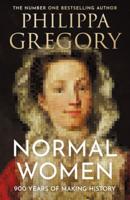Publisher's Synopsis
This historic book may have numerous typos and missing text. Purchasers can usually download a free scanned copy of the original book (without typos) from the publisher. Not indexed. Not illustrated. 1903 edition. Excerpt: ...Testament. Greed recte cauteque adornandi, in which he foreshadowed the characteristics of his edition of the New Testament, which appeared in 1734. The title of his New Testament set forth that the text was to exhibit the "marrow" of approved editions, the margin a selection of parallel passages and various readings, distributed into their classes, and the critical apparatus the compendium, supplement, and fruit of sacred criticism, especially Mill's. The text was in 1 Professor B. B. Warfield, Textual Criticism of the Nero Testament. two columns, and the lower margin exhibited various readings in five classes: "genuine, better than the readings in the text, equal to the readings in the text, inferior, not to be approved." The Apparatus Criticus, forming the second part of the work, contained an elaborate dissertation on the Criticism of the New Testament Text. A small edition appeared the same year at Stuttgart, without the critical apparatus. He collated sixteen manuscripts, but not thoroughly. He did not propose to give all the readings of these manuscripts, but only the more important. He stated the evidence for and against each reading. Bengel clearly perceived that no reliance was to be placed on evidence drawn from the mere numerical majority of readings apart from their origin and character; and that, therefore, witnesses were to be weighed and not counted. He was the first to recognise clearly the importance of the principle of transcriptional probability, viz. that it was more probable that a copyist would try to explain an obscure passage, or to make a hard construction easier, than that he would make difficult what was already easy. Hence his familiar The difficult canon, "The difficult is to be...






